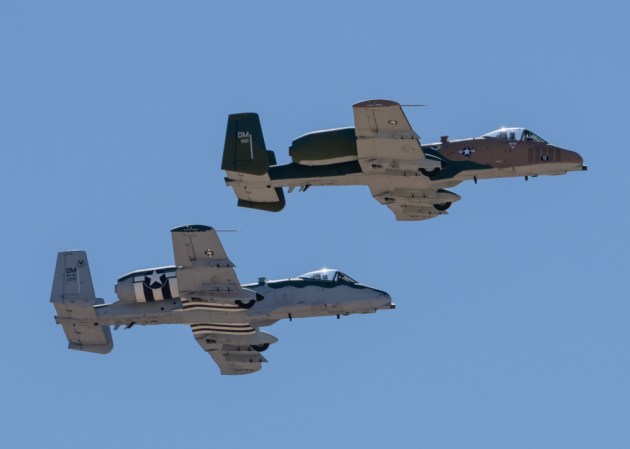The Air Force has taken a beating in recent years over its desire to retire the legendary A-10 Thunderbolt II from those who fly the airplane, troops on the ground, and Congressional lawmakers. The aircraft is very clearly a beloved, useful close-air support tool.
For much of this time, the Air Force kept the A-10 on a very low profile, going so far as to suppress a video about it, made by its own Combat Camera unit. Now, it looks like the Air Force is embracing the ugly duckling of its tactical jet family.
“If I have them, I’m going to use them,” Gen. Herbert “Hawk” Carlisle, the head of Air Combat Command, told Defense One. “They’re a fantastic airplane and I’m going to take advantage of them.”
The A-10 Warthog is the only aircraft built specifically for the CAS mission. The signature design feature is its 30mm gatling gun. The gun is more than 19 feet long and weighs more than 4,000 pounds. The distinctive sound made by the weapon (the BRRRRRT – created as rounds fire faster than the speed of sound), is music to the ears of the troops on the ground, so much so, the plane sometimes called “the grunt in the air.” A-10 pilots often find themselves providing support at “danger close” distances.

The Air Force wanted to retire the slow-moving but hardy plane to make room in the skies and in their budget for the F-35 Joint Strike Fighter, which Air Force Chief of Staff Gen. Mark Welsh III says is “designed for the whole battlespace.” The A-10 is considered to have a single role. As the worldwide campaign against ISIS (Daesh) in Iraq and Syria intensified further, the U.S. sent an A-10 fleet to Turkey to support ground operations in that theater. As worldwide conflicts place a greater demand on U.S. airpower, the Air Force is making room in its budget to maintain its A-10 fleets.

“Eventually… we will have to retire airplanes, but I think moving it to the right and starting it a bit later and maybe keeping the airplane around a little bit longer is something that’s being considered based on things as they are today and that we see them in the future,” said Carlisle.
Sen. Kelly Ayotte pointed out to Military.com how only last year the Air Force predicted the plane wouldn’t survive in the fight against ISIS. Gen. Michael Hostage, Carlisle’s predecessor, said he “can’t send an A-10 to Syria. It would never come back.” In the most recent National Defense Authorization, Congress literally forced the USAF to keep the plane, take retired A-10 out of storage, and appropriated funding for their maintenance.

“I look forward to reviewing the Air Force’s budget request early next year as it relates to the A-10,” Ayotte continued. “If the Air Force decides to end its campaign to prematurely divest the A-10, it would be a great day for our ground troops and a terrible day for America’s enemies.”










